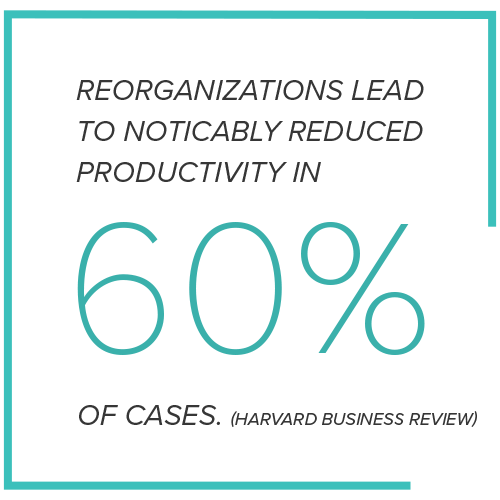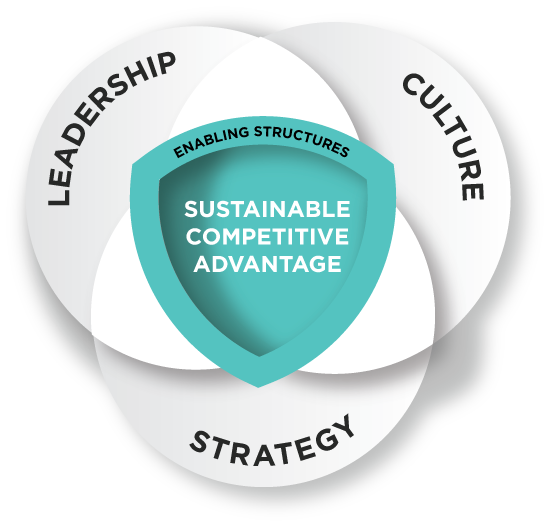The Devil You Know — Why Even Good Re-Org Plans Don’t Succeed
I spoke with an executive team in the midst of reorganizing their company structure in favor of more cross-functional teams. Previously, their marketing, sales and product…
Reorganizations can be a last-ditch effort for companies with poor earnings, deteriorating fundamentals, and mounting debt.
But re-orgs aren’t only for struggling companies.
A re-org can also be a proactive opportunity for an already competitive organization to solidify its position well into the future.
The fact is, in a marketplace of temporary competitive advantage, there can be no resting on laurels. The ability to fend off organizational inertia by continually restructuring a business around an evolving strategy is needed to stay ahead of the curve.
And yet, few re-orgs make good on the value they set out to deliver.
That’s because executives too often fail to see that a re-org is more than reconfiguring lines and boxes on an organizational chart.
A re-org must also focus on the intangibles that hold those lines and boxes together: a clear and aligned-on strategy, a culture that can sustain the change, and leaders who can “own” the outcomes.


Even when a company restructures from a position of strength, the process usually involves cutting costs, consolidating business units, trimming headcounts, or at the very least, changing established ways of operating.
All of that disruption can create a lot of confusion, uncertainty, and opposition from those impacted on the ground.
It’s common for people to resist change efforts, become distracted by change efforts (and therefore less productive), or choose to avoid the change efforts altogether by leaving the company. And these are also some of the key reasons why re-orgs fail to deliver.
A successful re-org, then, requires more than crossing t’s and dotting i’s of structures and the processes—it requires that your people experience the transition with curiosity, ambition, and ownership.
TGN Consulting helps you keep your finger on the pulse of your people as you navigate the disruption of a re-org process.
TGN Consulting Framework™ takes strategy, leadership, and culture as interdependent phenomena to be impacted in lockstep as you navigate a merger or acquisition:
STRATEGY – Ensuring that your employees have absolute clarity as to how their work contributes to a winning strategy.
CULTURE – Identifying the cultural shifts needed to realize the purpose of a re-org and sustain an organization through a period of re-structuring.
LEADERSHIP – Equipping leaders with tools to advance, shape, and intervene in key conversations that contribute to performance and to lead both the technical and human sides of change.

I spoke with an executive team in the midst of reorganizing their company structure in favor of more cross-functional teams. Previously, their marketing, sales and product…
Presented by: TGN Consulting Based on Interviews Conducted by: Kari Zeller (FKA Granger), Ilene Fischer, Noey Jacobson, Diana Ajzen, Maria Hincapie What We Wanted to Find…
Written by: Kari Zeller, Doug Hanover Originally published on Ivey Business Journal. Issues: January / February 2012, A leader’s job is to create contexts that will allow…